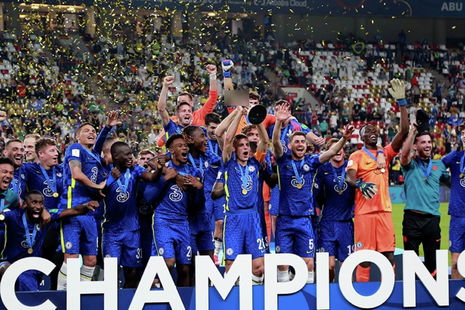The Club World Cup: the tournament no one wanted
Oscar O’Neill dives into the controversy surrounding this year’s expanded Club World Cup

On the surface, the concept of a Club World Cup sounds fantastic. The best teams from around the globe playing each other, to win the prestigious title of being labelled the world’s best club side.
Why, then, is the tournament attracting so little attention and enthusiasm from across the footballing world? Jamie Carragher has said that there is not “any appetite” for the tournament from “players, clubs and even supporters,” with Juergen Klopp adding that the tournament is “the worst idea ever invented”. A cynic could call Klopp’s distaste a product of Liverpool’s omission from the tournament despite cantering to last season’s Premier League, yet a dislike of the tournament is shared by a diverse group of fans, players and commentators alike.
“There is clearly a general lack of interest from spectators – and who can blame them?”
More general concerns have been raised relating to issues surrounding player welfare, with injury risk increasing as well as the danger of burnout. The French Players’ Union even described FIFA’s decision to hold an expanded tournament as a “game of massacre”. Perhaps this is somewhat of an exaggeration, as there have not been an unusual amount of injuries during the tournament. International tournaments following the end of the traditional club season are very common, with no notably major adverse effects on players.
The main issue with the Club World Cup is undoubtedly the absence of fan interest, and there are a number of reasons behind this. Firstly, there is the issue of location – the US is hardly the epicentre of global football. The problem of a lack of domestic interest in the tournament is then further added to by a number of other issues, such as awkward fixture times for European and African viewers, as well as issues surrounding affordability, with the US being an expensive country to travel to and stay in.
“A reasonable level of success – if success is measured in sponsor interest, global exposure, and a staggering $1 billion of TV rights”
Ticket prices are also important to consider here: the cheapest available for the opening game (upon initial release) cost a rather steep £257. Takeup was initially very low, forcing drastic cuts in prices to attract more fans. Prices were cut to under £100, with some tickets available for as little as £25. Despite these mammoth price cuts, there has hardly been a scramble for tickets. During the group stage, the average percentage of stadium capacity used was a measly 56%, with that figure jumping slightly to 62% for the round of 16 stage. Clearly there is a general lack of interest from spectators in the tournament – and who can blame them?
The 2024-2025 season began some eleven months ago, and all the consequential domestic and European competitions finished up two months ago. So, as Mr Carragher rightly said, there is little appetite to go and watch what is essentially a few glamorous friendlies with an inconsequential trophy that has no history or gravitas as the prize. This seems to be a tournament that no one wanted. But, obviously, it must be wanted by someone, or else it wouldn’t be happening.
The culprit as usual is FIFA, and perhaps more specifically their charming and typically incorruptible Swiss-Italian President Gianni Infantino. And, as with the Qatar World Cup of 2022, Infantino appears to be trying to charm the world into actually enjoying his bizarre brainchild, in a way akin to Mark Zuckerberg trying to win the world over to his equally strange Virtual Reality Metaverse. Nevertheless, Infantino will be pleased with the tournament this year, despite its teething problems and lack of fan interest. Most importantly, of course, there has been a reasonable level of success – if success is measured in sponsor interest, global exposure, and a staggering $1 billion of TV rights. As a result, despite fan ambivalence, it looks like this unwanted world cup is here to stay.
 News / Cambridge academics stand out in King’s 2026 Honours List2 January 2026
News / Cambridge academics stand out in King’s 2026 Honours List2 January 2026 Interviews / You don’t need to peak at Cambridge, says Robin Harding31 December 2025
Interviews / You don’t need to peak at Cambridge, says Robin Harding31 December 2025 Comment / What happened to men at Cambridge?31 December 2025
Comment / What happened to men at Cambridge?31 December 2025 News / AstraZeneca sues for £32 million over faulty construction at Cambridge Campus31 December 2025
News / AstraZeneca sues for £32 million over faulty construction at Cambridge Campus31 December 2025 Features / “It’s a momentary expression of rage”: reforming democracy from Cambridge4 January 2026
Features / “It’s a momentary expression of rage”: reforming democracy from Cambridge4 January 2026










